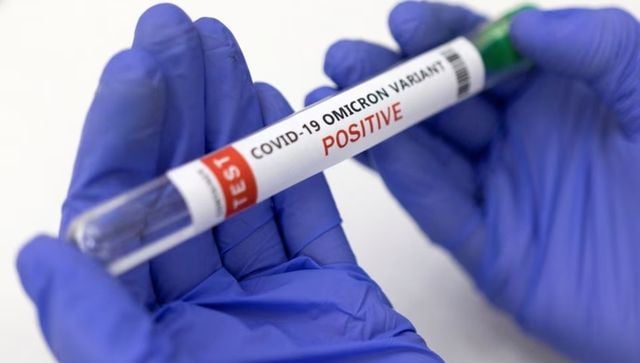How to differentiate between symptoms of COVID-19, H3N2 and flu

Representative Image- Reuters
The past couple of months of the so-called “flu-season” have been witness to a greater awareness about the annually occurring infection, primarily due to a variant of the influenza virus named H3N2. Traditional and social media news networks have highlighted this variant as one that causes the symptoms of a normal influenza infection to persist longer – even up to 3 weeks or more.
What exactly is H3N2?
Is it a new variant that poses a greater threat than influenza caused by ‘regular’ flu viruses? Does it interact with the SARS-CoV-2 virus that causes COVID-19? Does it infect children selectively? How do we identify symptoms and signs of H3N2 influenza at a time when even COVID-19 seems to returning on the back of a new sub-variant called XBB.1.16?
In order to be able to identify a prevailing viral illness, it is important to understand the differences between circulating viruses and the symptoms that they present with. This is key to early detection, proper diagnosis, and effective treatment.
Signs and Symptoms of Influenza:
Influenza, commonly known as the flu, is a contagious respiratory illness caused by the influenza virus.
These viruses are of A, B and C types and it is the former two that can cause widespread transmission.
The type A influenza viruses have a hemagglutinin (H) and a neuraminidase (N) surface protein – each of which are further classified into 18 & 11 sub-types respectively. The combination of the two determines the circulating virus e.g. H1N1, H3N2, H7N9 etc.
So H3N2 is one of the sub-types of influenza viruses that is currently circulating and hence the symptoms are similar to those of ‘regular’ influenza with a few difference,
Signs and symptoms of influenza may appear rapidly (1-4 days after exposure) and can range from mild to severe. The most common ones are fever, chills, body aches, headache, and fatigue. Many individuals experience an itching in the throat that continues as a sore throat, persistent cough (usually dry) and a runny or stuffy nose. In case of H3N2, the cough may be prolonged for up to 3 weeks or more and this usually guides the clinical diagnosis.
Children may experience additional symptoms such as earache and sinusitis.
Influenza can also cause complications such as pneumonia, bronchitis, and worsening of pre-existing medical conditions such as asthma or heart disease.
There may be other symptoms involving the gastrointestinal system such as nausea, vomiting, and diarrhea that may aid the clinical diagnosis.
Signs and Symptoms of COVID-19:
Recent reports have highlighted the fact that the COVID-19 pandemic continues with the SARS-CoV-2 virus mutating to escape infection-induced as well as vaccine-induced immunity. Thankfully, these mutations have thus far not caused any widespread increase in disease severity and fatalities. But the symptoms of COVID-19 closely resemble those of other respiratory illnesses and a person vaccinated against COVID-19 may erroneously dismiss any symptoms and continue transmitting the virus to others.
The signs and symptoms of COVID-19 are usually seen 2-14 days after exposure to the virus. The most common symptoms include fever, cough, and shortness of breath. Individuals could also experience fatigue, muscle or body aches, headache, loss of taste or smell (less common with new variants), sore throat, congestion or runny nose, nausea or vomiting, and diarrhea.
In older adults and those with comorbidities COVID-19 is known cause severe respiratory complications like pneumonia, acute respiratory distress syndrome (ARDS), and multi-organ failure.
So how does one know what is causing one’s symptoms?
Here is a quick guide:
There are several differences between influenza caused by regular flu viruses, the H3N2 and COVID-19 that can help distinguish between these illnesses:
- Age: Those below 8 years and those above 65 years are more at risk for influenza whereas COVID-19 infections are more common in young adults and older individuals.
- Start of symptoms: Influenza symptoms usually appear all of a sudden whereas COVID-19 symptoms may take several days to appear after exposure to an infected person.
- Grade of fever: Both influenza and COVID-19 cause fever, but fever is less common and usually lower (between 99-101o F) in influenza patients.
- Cough: In H3N2 influenza, cough is intense and persistent, leaving the affected individual exhausted.
- Feeling of Fatigue: COVID-19 causes profound fatigue which is less common in case of influenza.
- Loss of Smell or Taste: COVID-19 can cause a loss of smell or taste, whereas influenza does not do so.
- Gastrointestinal Symptoms: Influenza can cause gastrointestinal symptoms such as nausea, vomiting, and diarrhea, but they are less common in COVID-19 patients.
- Complications: Both illnesses can lead to severe complications, but COVID-19 is more likely to cause severe illness and death, particularly in older adults and those with underlying medical conditions.
In conclusion, any definitive diagnosis of a respiratory illness, especially of a viral origin starts with a clinical suspicion. This is further aided by the current season, history of a patient’s illness, demographic profile, concurrent chronic illnesses, prevalent health conditions in the community etc. While this guides the diagnosis, it is only laboratory testing that can confirm the same and help to identify the virus responsible. Hence it is extremely important to visit a doctor early (as soon as symptoms develop) and obtain a confirmed diagnosis.
Influenza treatment with antiviral medicines, if started right away, helps to shorten the duration of the illness and prevents progression to severe disease. Similarly, COVID-19 medication works best when administered early.
This is a responsibility shared by individuals, organizations and the community at large. Creating awareness through authentic and credible health information, ensuring access is available to healthcare professionals, testing laboratories and treatments goes a long way in helping people keep themselves and their loved ones protected.
The author is the Medical Director, Indian Subcontinent, International SOS. Views are personal.
For all the latest health News Click Here

